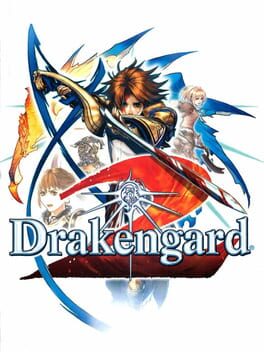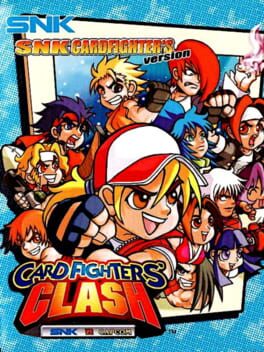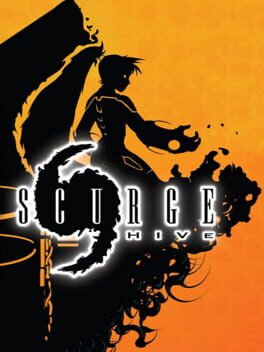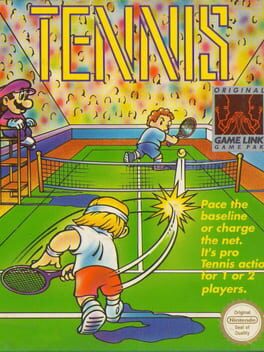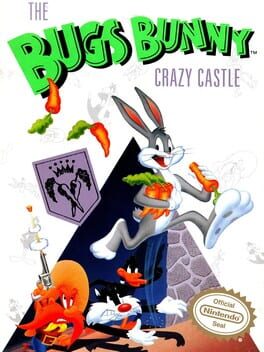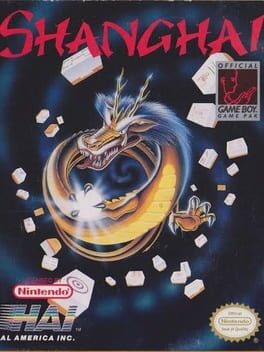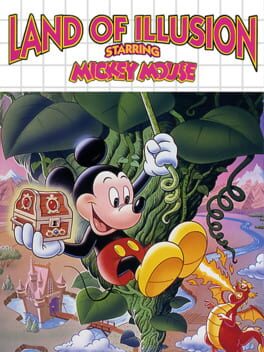2005
2003
2009
2006
1989
Tennis, or テニス, was originally released in 1984 and was ported to the Game Boy in 1989, which is what I'm going to talk about here.
It's a normal tennis game, without a lot of gimmicks or different modes, just the usual one-on-one game.
And like practically all sports games at the time, it's very basic and very... bad...
In the game you can walk and hit the ball, one button launches it faster and lower and the other launches it higher and slower, and that's all the strategy involved in the game, plus a lot of luck, plus the computer that sometimes simply becomes the best Tennis player in the world.
There's not much else to say about this game, the only notable thing about it is that Mario is the referee in it, which I thought was pretty funny when I saw it.
And my rating for the game is: 1 star.
It's a normal tennis game, without a lot of gimmicks or different modes, just the usual one-on-one game.
And like practically all sports games at the time, it's very basic and very... bad...
In the game you can walk and hit the ball, one button launches it faster and lower and the other launches it higher and slower, and that's all the strategy involved in the game, plus a lot of luck, plus the computer that sometimes simply becomes the best Tennis player in the world.
There's not much else to say about this game, the only notable thing about it is that Mario is the referee in it, which I thought was pretty funny when I saw it.
And my rating for the game is: 1 star.
1989
Bugs Bunny Crazy Castle was released in 1989 by Kotobuki System, now known as Kemco, and is a port of the NES game of the same name. In fact, this is the American and European version of a Japanese Mickey game, which was very common at the time: bringing games from Japan, but changing the theme to appeal to a different audience. However, the original game, in this case, was MICKEY. I don't know if there's anything more American than that.
And another thing about this game is that it spawned a sort of franchise, with more games that we'll see in this series here.
But all right, back to the game, this is a Long Leg game where he has to rescue Honey Bunny, a character who disappeared after this game because she was kidnapped by Coyote, Patolino, Eufrazino and Frajola. That's the story here, actually, more of a premise than a story in itself, right?
And the gameplay cycle consists of you guiding Longleg through the levels with the aim of getting the 8 carrots scattered in each one without being caught by the villains. You can use certain objects to defeat them or get in their way, and that's all there is to the gameplay. You do this for 80 levels, 60 in the NES version, but increased here.
As much as this sounds like a repetitive task, and for some people it might be, I have to admit that for me it was very easy. The levels are very short and, although the difficulty of the game increases a lot along the way, you learn different strategies to get through each level, which gives you a great feeling of achievement.
I do think there could have been a few less levels, but if you think about the situation of those who played this game at the time, with many people not being able to afford several games at the same time, having this variety could even be considered a positive point.
For me, the only negative point here is the technical quality of the game. I don't know if it was the Game Boy's hardware or some programming glitch, but every time a stage has one or two more enemies than normal, or is a bit bigger, the game has some glitches. Everything starts flashing and jumping around, it's not something that gets in the way, but it might bother some players.
Basically, that's all I had to say about Bugs Bunny Crazy Castle. It's a simple game, but very addictive.
My rating for it is: 3 stars.
And another thing about this game is that it spawned a sort of franchise, with more games that we'll see in this series here.
But all right, back to the game, this is a Long Leg game where he has to rescue Honey Bunny, a character who disappeared after this game because she was kidnapped by Coyote, Patolino, Eufrazino and Frajola. That's the story here, actually, more of a premise than a story in itself, right?
And the gameplay cycle consists of you guiding Longleg through the levels with the aim of getting the 8 carrots scattered in each one without being caught by the villains. You can use certain objects to defeat them or get in their way, and that's all there is to the gameplay. You do this for 80 levels, 60 in the NES version, but increased here.
As much as this sounds like a repetitive task, and for some people it might be, I have to admit that for me it was very easy. The levels are very short and, although the difficulty of the game increases a lot along the way, you learn different strategies to get through each level, which gives you a great feeling of achievement.
I do think there could have been a few less levels, but if you think about the situation of those who played this game at the time, with many people not being able to afford several games at the same time, having this variety could even be considered a positive point.
For me, the only negative point here is the technical quality of the game. I don't know if it was the Game Boy's hardware or some programming glitch, but every time a stage has one or two more enemies than normal, or is a bit bigger, the game has some glitches. Everything starts flashing and jumping around, it's not something that gets in the way, but it might bother some players.
Basically, that's all I had to say about Bugs Bunny Crazy Castle. It's a simple game, but very addictive.
My rating for it is: 3 stars.
1989
Released in 1989 and developed by Nintendo, even though it wasn't necessarily the first Gameboy game, it was certainly the most iconic of its launch. A game from Nintendo's most famous series at the launch of the console represented a huge selling point, and indeed, Super Mario Land was one of the best-selling games on the original Gameboy, and is still one of the best-remembered to this day.
It's a game with a real story, albeit a simple one because it's an old Mario story. In this game, Mario has the mission of saving Princess Daisy, in her first appearance in the franchise, and the inhabitants of Sarasaland from Tatanga, the little villain on the ship. Sarasaland is a very different world from the standard Mushroom Kingdom in Mario games, with each stage based on a real-world location, and the enemies, although similar to the originals, are different versions, such as the Goombo instead of the Goomba.
Another notable difference is in the gameplay, where the classic fire flower has been replaced by the Superball Flower, which launches balls that bounce off walls, adding an interesting but sometimes problematic dynamic when you get stuck in a loop.
In addition, the game features spaceship stages, where you control a submarine called Marine Pop and an airplane called Sky Pop, providing an experience similar to a shooting game. The Sky Pop stage is particularly challenging, almost like bullet hell, but with hellish birds instead of bullets.
Returning to the story, to save Daisy, Mario must travel and conquer all four kingdoms present here, Birabuto Kingdom, a desert kingdom based on ancient Egypt, Muda Kingdom, a water kingdom, Easton Kingdom, a kingdom partly based on Easter Island, and Chai Kingdom, a kingdom inspired by mythical ancient China, this last one I can also call INFERNO, because my god what a difficult business, the enemies are positioned in a way that was either completely deliberate to make it difficult, or it was a very poorly thought out level design, every two steps you take an enemy from beyond appears to kill you.
At the end of each kingdom you meet Daisy and she's actually an enemy in disguise, every time...
At the end, after the Sky Pop stage mentioned earlier, you defeat Tatanga in his armed airship, the Pagosu. After defeating him, Mario finally rescues the real Daisy, and the two of them set off together in a spaceship.
That's the basic story of the game. Although it's simple, it's good to have a narrative attached to the game, as it makes things less random, although they are still quite random.
I don't know why they made all these changes, perhaps to innovate or attract attention, but perhaps it wasn't the attention they wanted. Although it sold very well, being the console's fourth best-selling game, the game was heavily criticized in reviews at the time for its graphics, which were too ambitious for the power of the Game Boy, which is understandable, and for its length, which was considered too short, and I disagree with this last point.
Yes, the game is short, but I think that's an advantage, firstly because I'm not the biggest advocate of "length = quality". Besides, I think the greatest quality of this game is its brevity. It's possible to finish it in less than an hour if you play well, and I think this was an important quality for Game Boy games, especially in the early days when it was convenient to be able to play for short periods of time during the day.
The main negative point for me is the gameplay, specifically Mario's movement. They've implemented a kind of momentum on him, so that when you stop pressing the direction button, he keeps moving a little until he stops completely, just like in real life. This mechanic would be bad enough for a platform game that requires some precision like Mario, but the problem is that it only works sometimes, which makes everything confusing.
Another problem with movement is that sometimes Mario simply turns into a rock and falls like a meteor into the holes in the scenery, which is quite annoying.
Despite this, Super Mario Land isn't a bad game, it could just be better. The shortcomings in the gameplay I attribute to the Game Boy's architecture, especially at the beginning, when they still couldn't get the most out of the console, so I put that down to a bit of relief.
The thematic and story part is a bit random, honestly the worlds don't even seem to be part of the Mario universe, they're just a generic desert, a generic ocean, Easter Island and a generic Chinese place. The only good thing that came out of it was the introduction of Daisy, who later became important in the franchise.
All in all, the first great Game Boy game, Super Mario Land, has many flaws, but it occupies an important place in the console's history and is remembered to this day as a classic.
My rating for it is: 3 stars.
It's a game with a real story, albeit a simple one because it's an old Mario story. In this game, Mario has the mission of saving Princess Daisy, in her first appearance in the franchise, and the inhabitants of Sarasaland from Tatanga, the little villain on the ship. Sarasaland is a very different world from the standard Mushroom Kingdom in Mario games, with each stage based on a real-world location, and the enemies, although similar to the originals, are different versions, such as the Goombo instead of the Goomba.
Another notable difference is in the gameplay, where the classic fire flower has been replaced by the Superball Flower, which launches balls that bounce off walls, adding an interesting but sometimes problematic dynamic when you get stuck in a loop.
In addition, the game features spaceship stages, where you control a submarine called Marine Pop and an airplane called Sky Pop, providing an experience similar to a shooting game. The Sky Pop stage is particularly challenging, almost like bullet hell, but with hellish birds instead of bullets.
Returning to the story, to save Daisy, Mario must travel and conquer all four kingdoms present here, Birabuto Kingdom, a desert kingdom based on ancient Egypt, Muda Kingdom, a water kingdom, Easton Kingdom, a kingdom partly based on Easter Island, and Chai Kingdom, a kingdom inspired by mythical ancient China, this last one I can also call INFERNO, because my god what a difficult business, the enemies are positioned in a way that was either completely deliberate to make it difficult, or it was a very poorly thought out level design, every two steps you take an enemy from beyond appears to kill you.
At the end of each kingdom you meet Daisy and she's actually an enemy in disguise, every time...
At the end, after the Sky Pop stage mentioned earlier, you defeat Tatanga in his armed airship, the Pagosu. After defeating him, Mario finally rescues the real Daisy, and the two of them set off together in a spaceship.
That's the basic story of the game. Although it's simple, it's good to have a narrative attached to the game, as it makes things less random, although they are still quite random.
I don't know why they made all these changes, perhaps to innovate or attract attention, but perhaps it wasn't the attention they wanted. Although it sold very well, being the console's fourth best-selling game, the game was heavily criticized in reviews at the time for its graphics, which were too ambitious for the power of the Game Boy, which is understandable, and for its length, which was considered too short, and I disagree with this last point.
Yes, the game is short, but I think that's an advantage, firstly because I'm not the biggest advocate of "length = quality". Besides, I think the greatest quality of this game is its brevity. It's possible to finish it in less than an hour if you play well, and I think this was an important quality for Game Boy games, especially in the early days when it was convenient to be able to play for short periods of time during the day.
The main negative point for me is the gameplay, specifically Mario's movement. They've implemented a kind of momentum on him, so that when you stop pressing the direction button, he keeps moving a little until he stops completely, just like in real life. This mechanic would be bad enough for a platform game that requires some precision like Mario, but the problem is that it only works sometimes, which makes everything confusing.
Another problem with movement is that sometimes Mario simply turns into a rock and falls like a meteor into the holes in the scenery, which is quite annoying.
Despite this, Super Mario Land isn't a bad game, it could just be better. The shortcomings in the gameplay I attribute to the Game Boy's architecture, especially at the beginning, when they still couldn't get the most out of the console, so I put that down to a bit of relief.
The thematic and story part is a bit random, honestly the worlds don't even seem to be part of the Mario universe, they're just a generic desert, a generic ocean, Easter Island and a generic Chinese place. The only good thing that came out of it was the introduction of Daisy, who later became important in the franchise.
All in all, the first great Game Boy game, Super Mario Land, has many flaws, but it occupies an important place in the console's history and is remembered to this day as a classic.
My rating for it is: 3 stars.
1989
Baseball, or ベースボール, developed and distributed by Nintendo. This version of the game is basically a port of the original NES game, and plays just like it.
It's a very simple baseball game, where you control batting and pitching and don't have much of a goal other than to win the game, over and over again.
Technically it's pretty bad; the game is awkward to control and cumbersome, and the computer's intelligence is terrible. Like, it's one of the easiest games I've ever played, especially considering older games tended to be harder. This one is really easy; it's almost impossible to lose here.
And I really didn't like it, not even to pick it up once in a while and play a game.
Having said all that, my rating is: 1 star.
It's a very simple baseball game, where you control batting and pitching and don't have much of a goal other than to win the game, over and over again.
Technically it's pretty bad; the game is awkward to control and cumbersome, and the computer's intelligence is terrible. Like, it's one of the easiest games I've ever played, especially considering older games tended to be harder. This one is really easy; it's almost impossible to lose here.
And I really didn't like it, not even to pick it up once in a while and play a game.
Having said all that, my rating is: 1 star.
1989
Shanghai, or 上海, was created and distributed by HAL Laboratory in 1989. This game is part of a small series from Activision called Shanghai, which ran until 2011.
This game is a variation on the Chinese game, Mahjong, and although at first glance it looks complicated, it's actually quite simple. Basically, it's a slightly more elaborate "memory game". You have to match the 144 tiles with the same designs, but they are distributed in a specific way, with tiles overlapping each other. You can only match two pieces that have some empty adjacent space, and that's the whole challenge of the game. It involves a lot of luck in the distribution of the pieces, but more skill when it comes to deciding which pieces to take to make way for more later.
So, despite its simplicity, it's a game that requires a lot of planning and strategy, as well as luck.
The gameplay is very simple and there's no story, you just jump in and play a game until it's over. It has an "easy" mode for those who have difficulty finishing the board normally.
In short, it's an extremely simple game. Technically, the only thing I can mention is that the three songs the game features are nice, but depending on how long it takes you to finish a game, which is usually a long time, they can become repetitive. I myself played most of the time with the sound off because I couldn't stand the music any longer.
That said, my rating is: 2 stars.
This game is a variation on the Chinese game, Mahjong, and although at first glance it looks complicated, it's actually quite simple. Basically, it's a slightly more elaborate "memory game". You have to match the 144 tiles with the same designs, but they are distributed in a specific way, with tiles overlapping each other. You can only match two pieces that have some empty adjacent space, and that's the whole challenge of the game. It involves a lot of luck in the distribution of the pieces, but more skill when it comes to deciding which pieces to take to make way for more later.
So, despite its simplicity, it's a game that requires a lot of planning and strategy, as well as luck.
The gameplay is very simple and there's no story, you just jump in and play a game until it's over. It has an "easy" mode for those who have difficulty finishing the board normally.
In short, it's an extremely simple game. Technically, the only thing I can mention is that the three songs the game features are nice, but depending on how long it takes you to finish a game, which is usually a long time, they can become repetitive. I myself played most of the time with the sound off because I couldn't stand the music any longer.
That said, my rating is: 2 stars.
1989
Alleyway, or アレイウェイ, was developed by Intelligent Systems and distributed by Nintendo itself, released back in 1989.
The game is a clone of the classic "Breakout", which I believe you all know and which is often found in minigame collections of 1000 games in 1. However, Alleyway, despite being a "clone", is very well designed and thought out.
The game doesn't have a story; you control Mario, yes, Mario, although it's actually a little ship that serves as a barrier for the ball that is used to destroy the blocks. The aim here is precisely that: to break all the blocks in each level.
Speaking of stages, that's where this game stands out. Despite not having power-ups like some more recent versions of Breakout clones, Alleyway doesn't become repetitive. This is due to the care taken to maintain variety and challenge in each stage. It has 24 normal stages and 8 bonus stages that only serve to accumulate points. In each of the 24 normal levels, there is a difference; some are ordinary, in others the blocks go down over time, some blocks move, your little ship can get smaller making it harder to control, some levels get faster over time, and so on. So the game never gets boring and always keeps the player engaged until the end.
This is a perfect game for a console like the Gameboy. It's practical and quick to pick up and play in small doses on a daily basis, just by taking the console out of the bag and playing a few levels.
And that's all I had to say about Alleyway, it's very good, even in its simplicity they've managed to balance everything very well.
My rating for it is: 3 stars.
The game is a clone of the classic "Breakout", which I believe you all know and which is often found in minigame collections of 1000 games in 1. However, Alleyway, despite being a "clone", is very well designed and thought out.
The game doesn't have a story; you control Mario, yes, Mario, although it's actually a little ship that serves as a barrier for the ball that is used to destroy the blocks. The aim here is precisely that: to break all the blocks in each level.
Speaking of stages, that's where this game stands out. Despite not having power-ups like some more recent versions of Breakout clones, Alleyway doesn't become repetitive. This is due to the care taken to maintain variety and challenge in each stage. It has 24 normal stages and 8 bonus stages that only serve to accumulate points. In each of the 24 normal levels, there is a difference; some are ordinary, in others the blocks go down over time, some blocks move, your little ship can get smaller making it harder to control, some levels get faster over time, and so on. So the game never gets boring and always keeps the player engaged until the end.
This is a perfect game for a console like the Gameboy. It's practical and quick to pick up and play in small doses on a daily basis, just by taking the console out of the bag and playing a few levels.
And that's all I had to say about Alleyway, it's very good, even in its simplicity they've managed to balance everything very well.
My rating for it is: 3 stars.
1989
Hyper Lode Runner, or ハイパーロードランナー, is a "sequel", in quotes, to the classic "Lode Runner", developed by Tose Software and distributed by Bandai. Officially, it was the first game released for the big Gameboy in 1989, and, well, it's certainly a game that exists...
As I mentioned, this isn't the first game in this franchise; in fact, it's the tenth. The first Lode Runner was released six years earlier on all possible and imaginable platforms and, in turn, was a "clone" of the also classic Space Panic.
Despite being a classic, nowadays many people don't even know that Lode Runner exists, although the franchise still exists in a way, with almost 30 games, the latest of which was released in 2017.
But back to the topic of the video, what is Hyper Lode Runner about? As a classic game, it's quite simple. The story is basically non-existent, with just a simple premise: you control a space soldier who fights an army of aliens to take back the gold they stole from humanity.
The gameplay revolves around this; the objective in each stage is to pick up all the scattered piles of gold and then escape. You can't actually defeat the aliens, only create holes in the ground so that they fall in and don't catch you. You also have to use the holes to escape from them or reach other places.
The gameplay is quite simple and, both in this version and in the classic one, which I also played to see what it was like, it's complicated due to the technology of the time. Sometimes you don't have much precision to create the holes, and the game has some problems with the artificial intelligence, which sometimes goes crazy for no apparent reason.
However, there's no denying that the game is addictive. Even with these problems, it finds a very good point in its simplicity; you get stuck in the game for hours without realizing it, trying to find other ways to get through the levels, which is a positive point.
As for the levels, the game has 50 of them, with different layouts and even innovations in the gameplay cycle at times. On the whole, however, they end up being quite repetitive. One positive point is that you can also create your own levels. Unfortunately, however, you can't save them, which makes this feature somewhat redundant.
Essentially, that's all I had to say about Hyper Lode Runner. It's a simple game with a few problems and it gets repetitive quickly, but it's a classic for a reason; it knows how to hold your attention.
My rating for it is: 2 stars.
As I mentioned, this isn't the first game in this franchise; in fact, it's the tenth. The first Lode Runner was released six years earlier on all possible and imaginable platforms and, in turn, was a "clone" of the also classic Space Panic.
Despite being a classic, nowadays many people don't even know that Lode Runner exists, although the franchise still exists in a way, with almost 30 games, the latest of which was released in 2017.
But back to the topic of the video, what is Hyper Lode Runner about? As a classic game, it's quite simple. The story is basically non-existent, with just a simple premise: you control a space soldier who fights an army of aliens to take back the gold they stole from humanity.
The gameplay revolves around this; the objective in each stage is to pick up all the scattered piles of gold and then escape. You can't actually defeat the aliens, only create holes in the ground so that they fall in and don't catch you. You also have to use the holes to escape from them or reach other places.
The gameplay is quite simple and, both in this version and in the classic one, which I also played to see what it was like, it's complicated due to the technology of the time. Sometimes you don't have much precision to create the holes, and the game has some problems with the artificial intelligence, which sometimes goes crazy for no apparent reason.
However, there's no denying that the game is addictive. Even with these problems, it finds a very good point in its simplicity; you get stuck in the game for hours without realizing it, trying to find other ways to get through the levels, which is a positive point.
As for the levels, the game has 50 of them, with different layouts and even innovations in the gameplay cycle at times. On the whole, however, they end up being quite repetitive. One positive point is that you can also create your own levels. Unfortunately, however, you can't save them, which makes this feature somewhat redundant.
Essentially, that's all I had to say about Hyper Lode Runner. It's a simple game with a few problems and it gets repetitive quickly, but it's a classic for a reason; it knows how to hold your attention.
My rating for it is: 2 stars.
